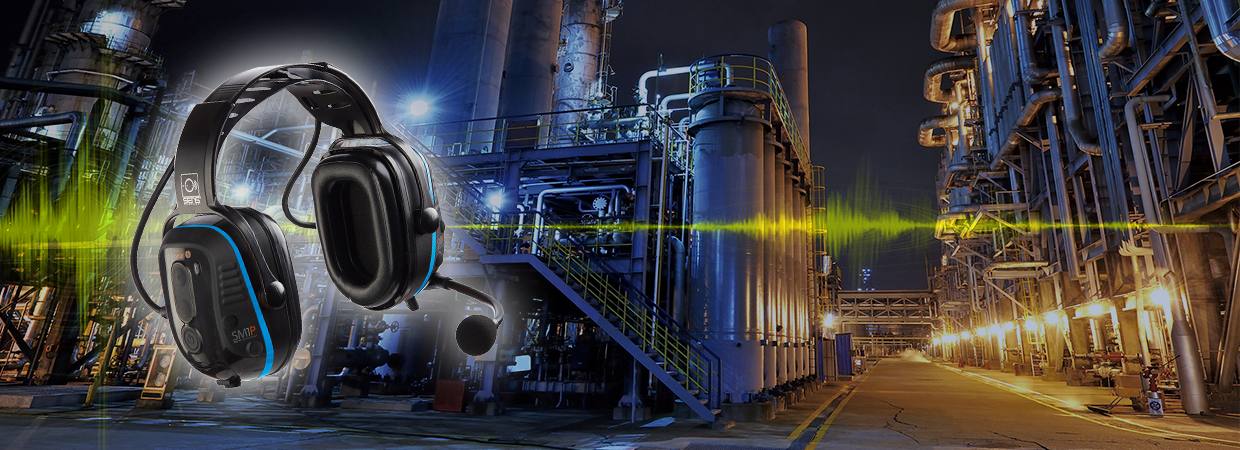- Home
- Blog
- Hearing Protection
- A Journey Towards Safety: Evolution of Hearing Protection in Oil & Gas

A Journey Towards Safety: Evolution of Hearing Protection in Oil & Gas
The early days of the oil and gas industry were characterized by rapid growth, advancements in technology, and improved operational efficiency. However, the importance of worker safety and health was initially overlooked. As a result, the industry has continuously strived to develop a safety culture, acknowledging the need for constant improvement.
The oil and gas industry has undeniably played a significant role in driving the global economy, powering various sectors such as transportation and manufacturing. However, this dynamic industry also presents its fair share of challenges, particularly concerning the safety of its workers. One of these challenges is the constant exposure to high levels of noise that oil and gas workers experience on a daily basis. Nevertheless, over time, the industry has realized the critical importance of hearing protection in ensuring the safety and well-being of its workforce.
Oil & Gas in the 1960s
During the 1960s, the oil and gas industry made significant progress in hearing protection technology, as indicated by reports. This era saw the introduction of foam earplugs, which offered improved comfort and noise reduction compared to their predecessors. Before that, earplugs made of wax, cotton, or sponge-like materials were commonly used, but they provided limited protection and were often ineffective due to improper fitting or inconsistent use. With the recognition of the need for more advanced solutions, the industry began exploring innovative approaches. While these early earplugs were a step in the right direction, they still had limitations in achieving consistent protection due to issues like improper fitting or inadequate user compliance.
In the subsequent years, acoustic earmuffs made from innovative materials gained popularity for their superior noise reduction capabilities. However, despite the improved protection, traditional earmuffs presented their own set of challenges. Workers found them uncomfortable for extended periods of use, and effective communication in high-noise environments remained a significant concern. Despite advancements in technology, the industry's primary focus on safeguarding equipment and investments overshadowed the importance of worker safety. As a result, workers continued to face significant safety risks, leading to alarmingly high numbers of workplace deaths in the oil and gas sector.
Oil & Gas from the 1970s-2000s
During the 1970s, the move offshore brought about a new set of challenges and increased safety risks for workers in the oil and gas industry. The fast-paced nature of offshore production created a sense of urgency, which sometimes compromised safety measures. However, high-profile disasters like the Piper Alpha Disaster served as a wake-up call, highlighting the need for improved worker safety. As a result, regulatory bodies like OSHA were established, leading to the strengthening of safety standards. In the 2000s, catastrophic events such as the Texas City BP refinery explosion and the Deepwater Horizon disaster further emphasized the necessity for safety improvements. The reorganization of regulatory authorities, including the transformation of the MMS into the BOEMRE, demonstrated the industry's commitment to enhancing safety practices.
Oil & Gas Today
In recent years, there has been a growing concern about climate change and the need for environmental responsibility in the oil and gas industry. This has led to increased calls for stricter rules and regulations from the EPA. The industry has responded by focusing on reducing methane emissions and implementing advanced technologies to detect and repair leaks. These efforts reflect the ongoing commitment of the industry to prioritize safety and environmental stewardship. Looking ahead, the future of hearing protection in this dynamic industry looks promising, with ongoing research and development aiming to create even more advanced and personalized solutions. While the industry has made significant progress in enhancing safety, challenges still remain. As the industry continues to evolve, innovation and technology will continue to play a crucial role in shaping safety culture and providing a safer working environment for all employees.
The history of hearing protection in the oil and gas industry showcases the remarkable journey from initial challenges and limited awareness to the development of cutting-edge solutions like those provided by Sensear. Thanks to the collective efforts of the industry to prioritize worker safety, significant progress has been made in enhancing the well-being of oil and gas workers. The oil and gas industry has made significant strides in establishing a safety culture, but it is important to recognize that the journey toward enhanced safety is ongoing.
Companies like Sensear demonstrate how innovative approaches can have a significant impact on worker safety in the oil and gas industry and beyond, ensuring a safer future for all workers in this essential sector. Sensear's headsets combine advanced hearing protection with communication technologies, allowing workers to interact seamlessly while safeguarding their hearing. Additionally, Sensear's products offer wireless connectivity and compatibility with existing communication systems, addressing previous challenges in efficient field communication. This adaptability and ease of integration further enhance the versatility of Sensear's solutions and encourage widespread adoption across countless industries. Sensear understands that workers require more than just noise reduction – they need the ability to communicate effectively and maintain complete situational awareness in challenging environments.









